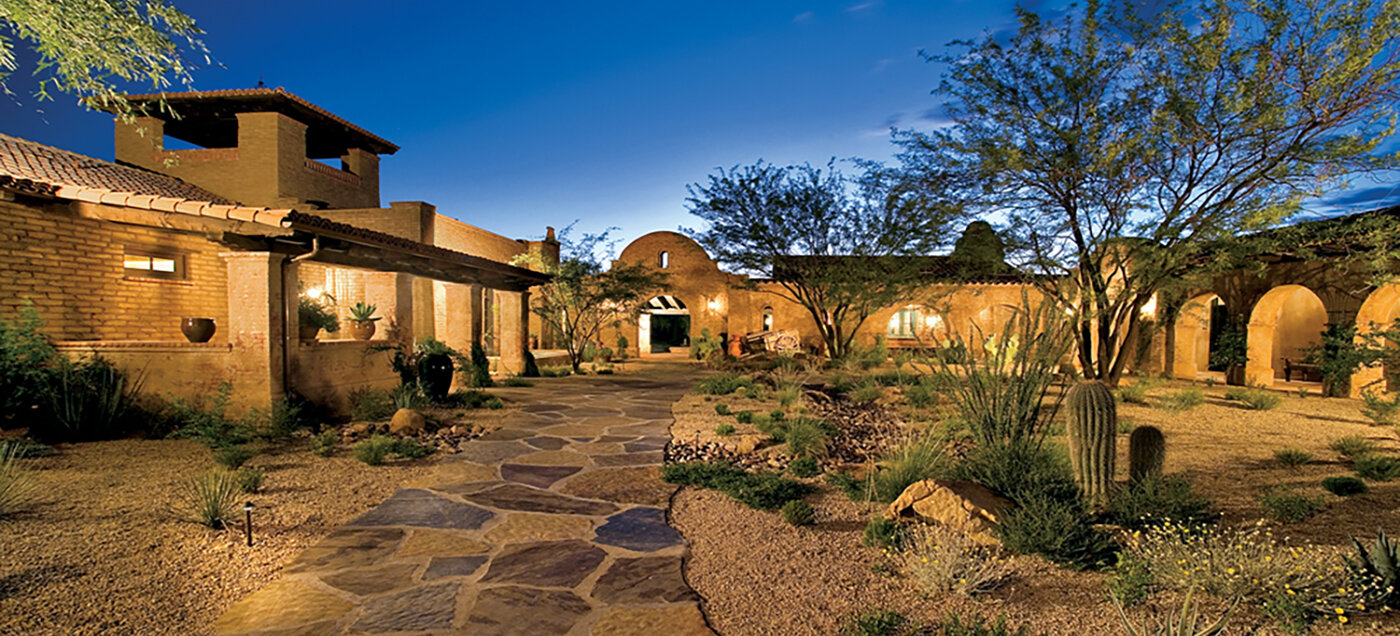Residential Real Estate News

Housing Starts Down in July, Supply Chain Challenges Remain in U.S.
Residential News » Scottsdale Edition | By David Barley | August 19, 2021 8:37 AM ET
According to a new report from the U.S. Department of Housing and Urban Development and the U.S. Census Bureau this week, supply chain and labor challenges helped to push overall housing starts down 7.0 percent to a seasonally adjusted annual rate of 1.53 million units.
The July 2021 reading of 1.53 million starts is the number of housing units builders would begin if development kept this pace for the next 12 months. Within this overall number, single-family starts decreased 4.5 percent to a 1.11 million seasonally adjusted annual rate. The multifamily sector, which includes apartment buildings and condos, decreased 13.1 percent to a 423,000 pace.
"The latest start numbers reflect declining builder sentiment as they continue to grapple with high building material prices, production bottlenecks and labor shortages," said Chuck Fowke, chairman of the National Association of Home Builders. "Policymakers need to prioritize the U.S. supply chain for items like building materials to ensure builders can add additional inventory the housing market desperately needs."
"The decline in single-family permits indicates that builders are slowing construction activity as costs rise," said NAHB Assistant Vice President of Forecasting & Analysis Danushka Nanayakkara-Skillington. "Starts began the year on a strong footing but in recent months some projects have been forced to pause due to both the availability and costs of materials."
On a regional and year-to-date basis (January through July of 2021 compared to that same time frame a year ago), combined single-family and multifamily starts are 27.7 percent higher in the Northeast, 20.8 percent higher in the Midwest, 18.5 percent higher in the South and 27.7 percent higher in the West.
Overall permits increased 2.6 percent to a 1.64 million unit annualized rate in July. Single-family permits decreased 1.7 percent to a 1.05 million-unit rate. Multifamily permits increased 11.2 percent to a 587,000 pace.
Looking at regional permit data on a year-to-date basis, permits are 24.9 percent higher in the Northeast, 23.0 percent higher in the Midwest, 25.9 percent higher in the South and 28.2 percent higher in the West.

The National Association of Realtors Chief Economist Lawrence Yun also commented, "Rents will be soaring in the coming months, especially for apartment units, as homebuilding retreated in July. There was a housing shortage before the pandemic, and the shortage has been exacerbated during the pandemic. Therefore, homebuilding needed to be greatly ramped up as the jobs recovery took hold. Yet in July, housing starts fell by 7% -- single-family construction is down by 4% and multifamily construction is down by 13%. Other factors holding back construction: supply-chain disruptions in getting the right material on a timely basis, lags in getting approvals for land lot development, and labor shortages."
Yun continues, "With home prices having risen by record amounts over the past year, homebuying will become an increasing challenge, and a good number of households may simply decide to rent. In addition, the jobs recovery is enticing people out of their parents' homes to seek their own housing. Consequently, rental demand is rising strongly. With an inadequate supply of available homes, rents will be strengthening and adding further pressure to overall consumer price inflation."
The Mortgage Bankers Association Chief Economist Mike Fratantoni also made the following comments on this new housing data for July, "Both single-family and multifamily starts declined in July relative to June, but single-family starts remain almost 12% higher than last year. There are now almost 690,000 single-family homes under construction - the largest number since 2007. This is clearly a positive sign given the remarkably low levels of inventory on the market.
"Permits for single-family homes dropped slightly over the month but were higher than a year ago and remain higher than the level of starts. The pace of construction should continue to increase, particularly if supply-chain constraints begin to loosen."
Sign Up Free | The WPJ Weekly Newsletter
Relevant real estate news.
Actionable market intelligence.
Right to your inbox every week.
Real Estate Listings Showcase
Related News Stories
Residential Real Estate Headlines
- U.S. Mortgage Rates Continue to Rise for Fourth Consecutive Week
- Income Needed to Buy a Home in America Spikes 80 Percent During Biden Presidency
- Pending Home Sales in U.S. Dip 5 Percent in January
- $2 Trillion of U.S. Home Value Gains Enjoyed in 2023
- Florida Condo Prices Falling as Insurance and HOA Fees Skyrocket
- Greater Palm Beach County Residential Sales Slip in January
- Greater Miami Area Home Sales Uptick in January, Condo Sales Dip
- California Home Sales Uptick 6 Percent Annually in January
- Orlando Area Home Sales Slide in January, Eighth Consecutive Month
- U.S. Owners Stay in Their Homes on Average 12 Years Now
- U.S. Mortgage Rates Uptick in Early February
- Homes in 86 Percent of U.S. Metros Enjoyed Price Gains in Q4
- Macau's Residential Market, Economy Both Face Ongoing Challenges in 2024
- Greater Las Vegas Condo, Home Sales Both Jump in January
- U.S. Home Equity Continues to Dip in Q4
- Canada Home Sales Dip 11 Percent Annually in 2023
- U.S. Luxury Home Prices Hit Record High in 2023, Up 9 Percent Annually
- Falling U.S. Mortgage Rates Boost New Home Sales in December
- Greater Palm Beach Area Residential Sales Dip in 2023
- Record 89 Percent of U.S. Construction Industry Was Not in a Union in 2023
- Greater Miami Area Home Prices Jump 15 Percent Annually in 2023
- 2023 U.S. Home Sales Was Worst Year in 3 Decades Says NAR
- Greater Orlando Total Residential Sales Drop 20 Percent in 2023
- U.S. Construction Materials Input Prices Fall Sharply in December
- Residential Rents in the U.S. Decline for Third Straight Month in December
- U.S. Foreclosure Activity Increased 10 Percent in 2023
- U.S. Mortgage Applications Jump 10 Percent in the First Week of 2024
- 2023 Was Slowest Year For Las Vegas Housing Market in Over a Decade
- Hong Kong New Residential Construction Completions to Implode 44 Percent by 2026
- Global Cities Residential Price Growth Recovers as Interest Rate Cuts Begin
- U.S. Mortgage Rates End 2023 on the Decline
- Pandemic-Driven U.S. Homebuyer Migration Boom Is Dying
- Ireland Experiences Lowest Home Price Appreciation in 4 Years in 2023
- Less than 16 Percent of U.S. Homes For Sale Were Affordable for Typical Buyers in 2023
- Palm Beach Area Total Residential Sales Uptick in November
- U.S. Home Price Growth Continued to Slow in November
- Greater Miami Area Residential Sales Dip 8 Percent Annually in November
- U.S. Home Sales Remain Relatively Flat in November
- Great Orlando Residential Sales Dive 18 Percent in November
- Hong Kong's Residential Property Market Faces More Challenges in 2024





